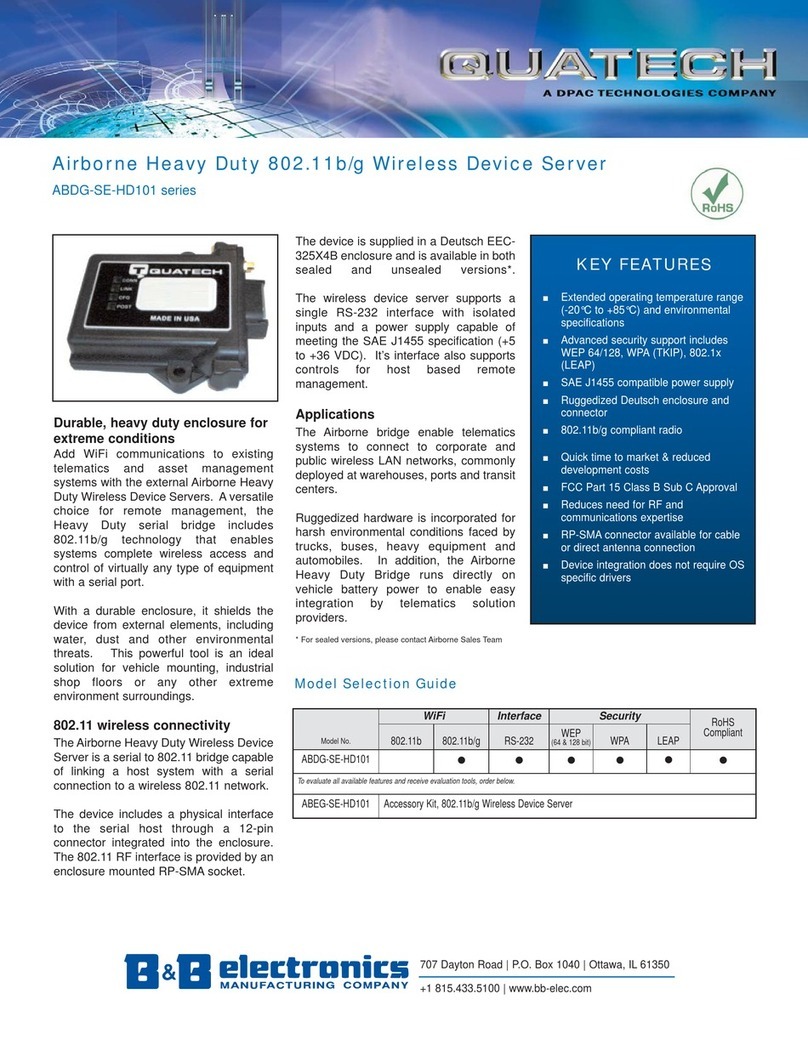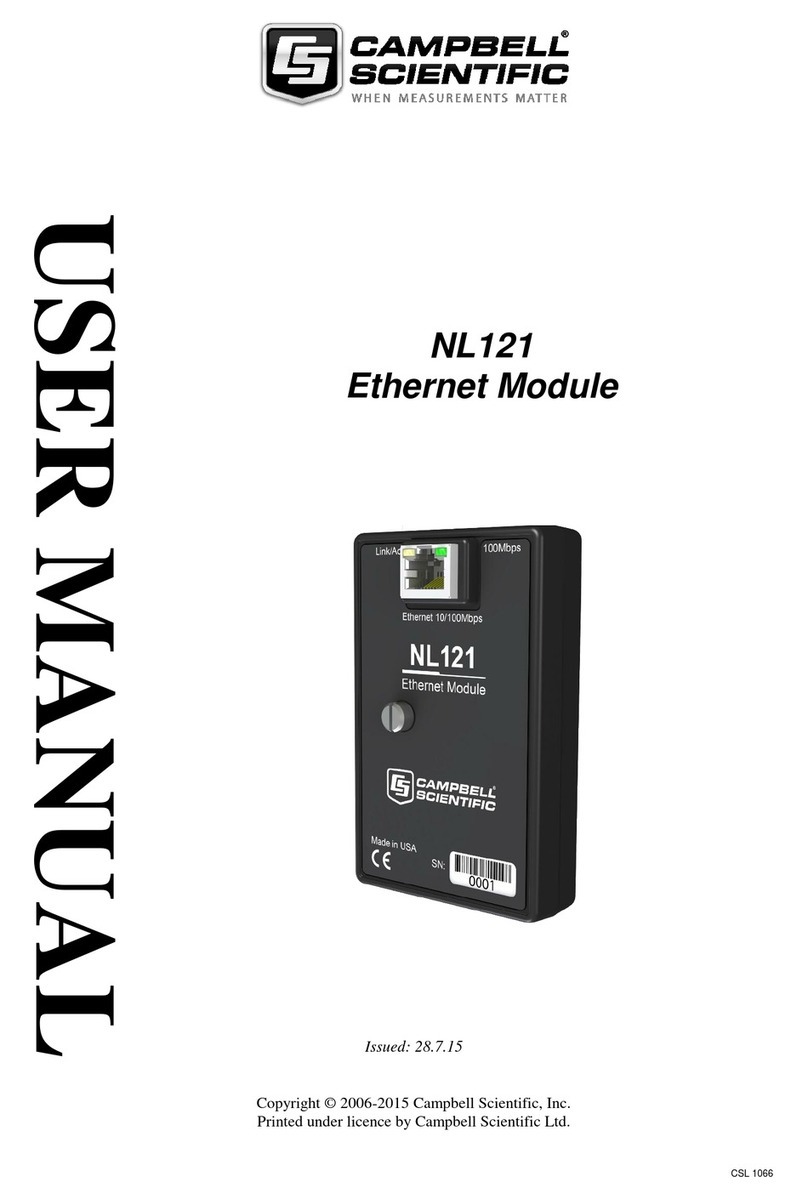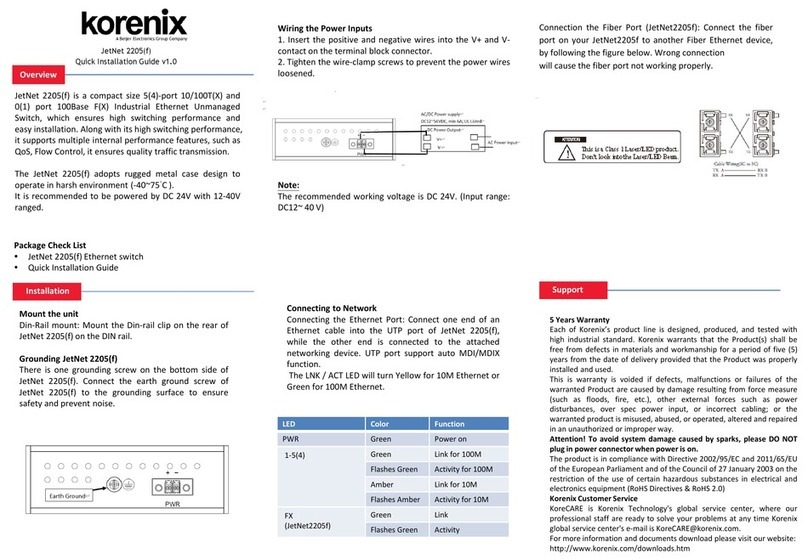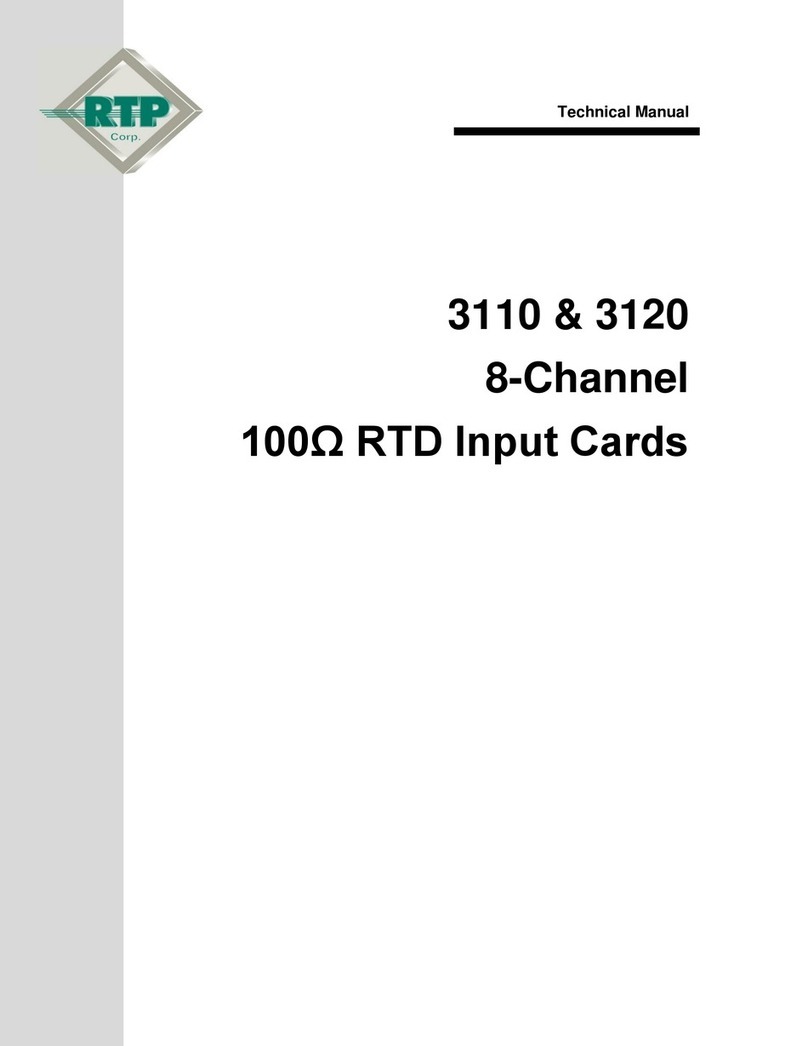Status Instruments SEM1401 User manual

SECTION CONTENTS PAGE NO.
1.0 DESCRIPTION 1
2.0 SPECIFICATION 1
3.0 INSTALLATION 2-3
4.0 ALARM TRIP SET UP 3-4
5.0 OPERATION 4
6.0 MECHANICAL 5
Status Instruments Ltd, Green Lane Business Park, Tewkesbury, Glos. GL20 8DE
Tel: +44 (0)1684 296818 Fax: +44 (0)1684 293746
52-214-2410-01 Issue: Web 1401
SEM1401
INDEX
Loop Powered Trip Amplifier

The SEM1401 is a single trip amplifier.
Type Two wire (4 to 20) mA, 50 mA max.
Protection Reverse connection protected
Loop Drop 5 V max.
Alarm HIGH or LOW level, switch selected, side entry
Contact Single relay changeover with N/O / N/C contacts available
Rating Resistive Load 2 A @ 250 VAC/125 VDC max. Power 150 W (Inductive Loads)
Indication Alarm LED on module front face
Set point (0 to 100) % multi turn potentiometer, access on module front face
(Repeatability ± 0.2 %)
Hysteresis (0.1 to 5) % Single turn trim pot on module front face
Delay 0.5 second fixed delay
Failure Mode On loss of signal:- HIGH level No alarm condition; LOW level alarm
condition (i.e. Alarm operates as if signal has fallen to -25 % or 0 mA)
Minimum Current 3.5 mA
Isolation 3000 VAC rms between contacts and input 1000 VAC rms between contacts
Ambient (0 to 50) ºC; (10 to 95) % RH non condensing
Connection Captive clamp screws
Cable Size 4 mm² solid/2.5 mm² stranded
Case Material Grey Polyamide
Case Flammability To UL94-V0 VDE 0304 PT3 level 111A
Dimensions (60 x 60 x 21) mm (67.5 mm above rail)
Mounting Snap on “Top Hat” (DIN EN 50022-35)
Max Vibration 12 G (10 to 55) Hz at double amplitude 2 mm
Shock Res. 12 G
Compliant With EN50081-1, EN50082-1
Weight 100 grams
Page 1
WARNING! Hazardous voltages may be present on the terminals - the equipment must
be installed by suitability qualified personnel and mounted in an enclosure
providing protection to at least IP20.
WARNING! If not installed and used in accordance with these instructions, protection
against hazards may be impaired.
IMPORTANT NOTE it may be preferred to set the user adjustment on the bench prior to
installation. Please read Section 3.0 before installation.
This trip must be housed within a suitable enclosure that will provide protection from the external
environment, to ensure that the stated temperature and humidity operating ranges are maintained. As
SEM1401 contains a high quality relay, care must be taken to ensure the trip is not subjected to strong
shock or vibration, as this may result in momentary opening of the relay contacts. The SEM1401 must not
be located near a strong magnetic field, such as a transformer, solenoid or electric motor.
The SEM1401 case is designed to snap fit onto a standard “Top Hat” DIN rail. To remove from DIN rail, apply
pressure at the bottom face of the back upwards towards the rail to release the spring clip and tip away
from the top. The trip may be mounted in any orientation and stacked side by side along the rail.
Connections to the trip are made via screw terminals, with wire protector plates provided inside each
terminal. To maintain CE compliance twisted pair (screened) cables are recommended for signal connections.
It is also good practice to ensure that all (4 to 20) mA loops are grounded at a single point. Before
installation ensure the (4 to 20) mA loop has enough voltage available to drive the trip. Refer to the above
specification for the loop voltage drop. The change over contacts provided by the SEM1401 are capable of
switching 250 VAC 125 VDC @ 2 A resistive load, 150 W inductive load. Internal Varistors are connected
across the contacts to protect against over voltage. It is advised that a external R/C snubber network is
used when switching inductive AC loads (see Figure 1). When switching DC inductive loads, a diode
connected in parallel with the inductor must be used to protect the contacts from the energy stored in
the inductor (See Figure 2).
Installation overvoltage Category 2 (as per BS EN61010-1)
If this equipment is to be used in environments with overvoltage Category 3, transient suppressors
should be installed on wiring carrying greater than 50 VAC or 75 VDC.
Any power supply to the equipment greater than 50 VAC or 75 VDC must be protected by a suitable
fuse and a switch or circuit breaker which should be near the equipment.
The equipment contains no user serviceable parts.
Page 2
1.0 DESCRIPTION 3.0 INSTALLATION
2.0 SPECIFICATIONS
2.1 INPUT
2.2 OUTPUT
2.3 GENERAL SPECIFICATION
3.1 MECHANICAL
3.2 ELECTRICAL

NOTE: Latching relays are used in this product in conjunction with an advanced relay drive circuit. During
commissioning, on initial power up, or after switch settings have been modified, one trip operation must
be completed in order to synchronise the latching relay(s). Once this cycle has been completed the unit
will function correctly during normal operation cycles. On power down the trip contacts will rest as for a
-25 % (0 mA) process value and take this state indefinitely until power up. The initial power up cycle will
only be required again if the unit switch settings are changed, or the unit is removed from the installation
and is subjected to shocks greater that 12 G, i.e. during transit.
This section deals with the trip setup. Three adjustments are available to the user:
High/Low alarm selection switch located on the side of the trip.
Set point adjustment -15 turn front panel potentiometer provides (0 to 100) % set point range.
Hysteresis adjustment - single turn potentiometer located on front panel provides (0.1 to 5) % set
point hysteresis. Hysteresis is provided to stop relay chatter at the trip point, the amount of
hysteresis required will be dependent on the process signal noise.
Page 3 Page 4
(4 to 20) mA (4 to 20) mA
RC
SNUBBER LOAD
LOAD
AC DC
IN
TRIP
HYS
SEM1401
OUT
CN/C N/O
IN
TRIP
HYS
SEM1401
OUT
CN/C N/O
Figure 1 Figure 2
(4 to 20) mA
IN N/C
N/O
C
H
LOUT
-
+
4.0 ALARM TRIP SETUP
A red LED indicates alarm state ON.
With care, the SEM1401 trip set point may be set up in the process but the task is greatly simplified by
replacing the process signal with a adjustable (4 to 20) mA current source, to simulate the (4 to 20) mA
process signal.
The set up process is as follows:
1. First decide on the type of trip required, “High” for alarm ON state above set point, or “Low” for
alarm ON state below set point. Set the High/Low alarm selection switch on the side of the
enclosure to the desired setting, by inserting a 3 mm blade screw driver into the hole and apply
one press against the switch plunger. This will toggle the switch between the the two alarm settings
being :
High alarm state - plunger out (flush with the enclosure inside face)
Low alarm state - plunger in (depressed below inside face)
2. Using a 3 mm screw driver, turn the Hysteresis control full anti-clockwise to set the hysteresis
to 0.1 %
3. Set the process current to the desired trip alarm setting, then using a 3 mm screw driver adjust the
set point until the alarm changes state. Clockwise to increase, anticlockwise to decrease. Adjust
the set point backwards and forwards until it is positioned at the point at which the alarm LED has
just come on.
4. Set the hysteresis control to the desired value, as a guide fully clockwise sets 5 %, mid position
2.5 %.
5. Now raise and lower the process input signal about the trip setting and ensure the alarm trips at set
point and trips off at set point plus (minus) hysteresis. If required fine adjust settings.
6. Now fully operate the system, it may be found necessary to adjust the hysteresis setting during
operation depending upon the fluctuation or noise present on the process signal.
Once setup and operating satisfactorily the trip amplifier requires no further user adjustments.
5.0 OPERATION

Smart In Head Temperature Transmitters
DIN Rail Mounted Temperature Transmitters
Panel & Field Temperature Indicators
Temperature Probes
Trip Amplifiers
Signal Conditioners
And many other products
For further information on all products:
Status Instruments Ltd, Green Lane Business Park, Tewkesbury, Glos. GL20 8DE
Tel: +44 (0)1684 296818 Fax: +44 (0)1684 293746
ALSO AVAILABLE:
Hi/Lo
Switch
Select
SEM1401
HYS
TRIP
IN
CN/C N/O
SERIAL NO.
OUT: RELAY 2 A @ 250 VAC
IN: 2 WIRE (4 to 20) mA
www.status.co.uk OUT
LO
HI
Figure 3
60.0 mm 21.0 mm
60.0 mm
6.0 MECHANICAL DETAIL
Page 5 Page 6
Popular Network Hardware manuals by other brands

8e6 Technologies
8e6 Technologies Enterprise Filter Authentication R3000 quick start guide
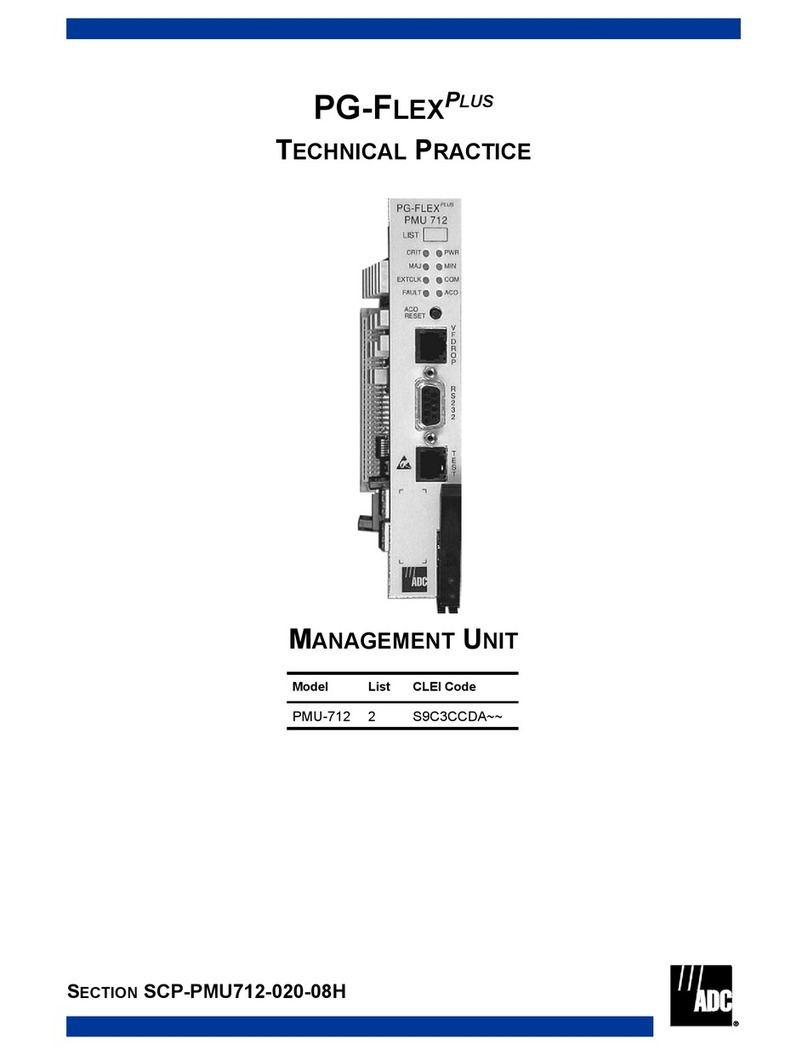
ADC
ADC PG-FLEXPLUS PMU-712 manual

ZyXEL Communications
ZyXEL Communications X6004 Specifications

RFID
RFID HF-3600E-RS232 product manual

Ruckus Wireless
Ruckus Wireless ZoneFlex 7731 802.11n Getting started guide
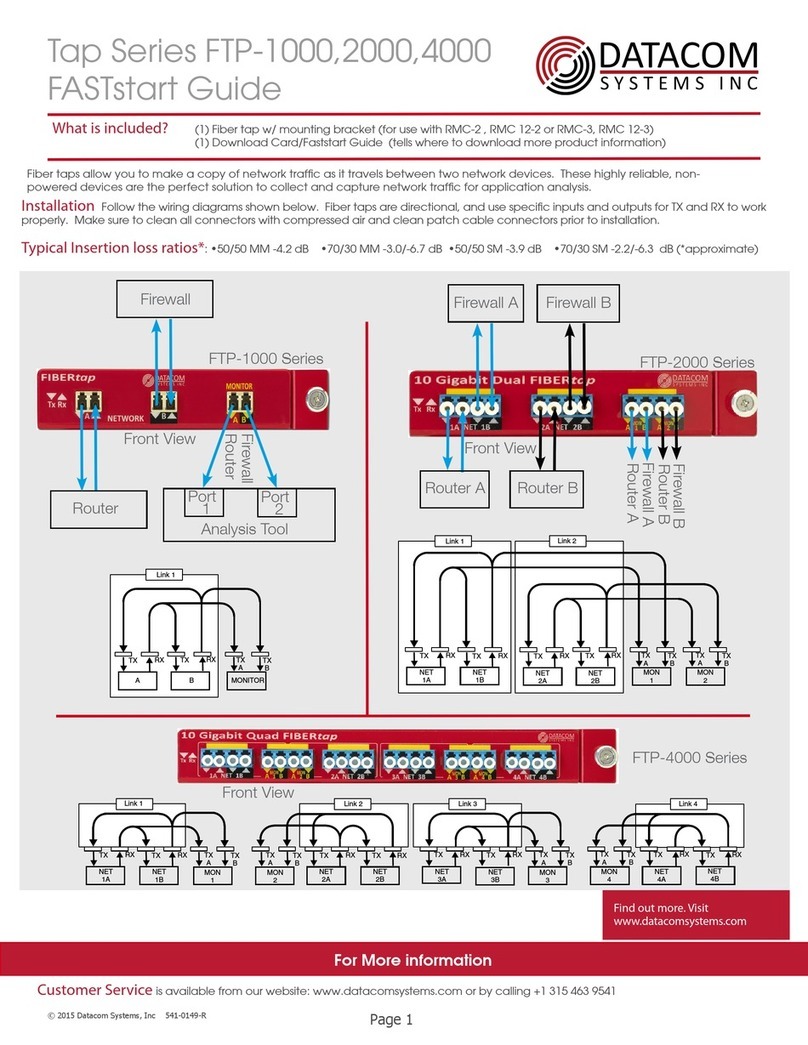
Datacom Systems
Datacom Systems Tap Series Fast start guide
